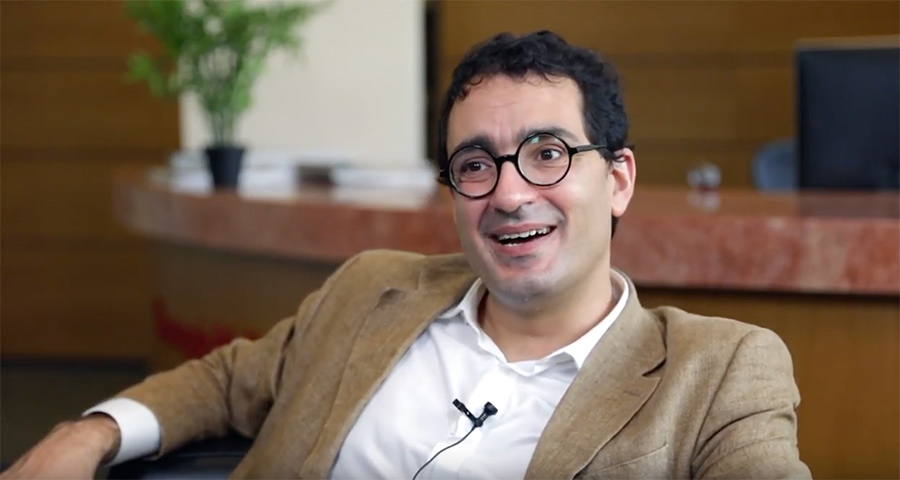
Simon DeDeo discusses the nature of intelligence and AI
In the fall of 2019, the CMU-Q micro courses included a series of three that took a broader look at the impact of artificial intelligence (AI) on society. Simon DeDeo’s course, the second of the series, delved into the nature of intelligence. DeDeo teaches in the Department of Social and Decision Sciences at Carnegie Mellon University’s main campus in Pittsburgh.
Your micro course at CMU-Q was on AI and intelligence. What do you mean by that?
So intelligence is a funny concept, right? We’ve had for many years the idea of testing people’s intelligence with, let’s say, an IQ test. But I think we don’t realize that most of the reasons that we’re so smart have to do with the societies that we’re a part of.
A functional society is in some ways like a brain that makes decisions. Intelligence can be distributed. When you link together all of the advances in artificial intelligence and machine learning, you realize that intelligence is not simply the property of a single brain that you measure with some kind of IQ test. It really gets you thinking more deeply about what artificial intelligence is going to mean for us as a species.
What do you think is the most common misconception of AI?
I think people generally have an idea that AI is about a really smart robot, and the really smart robot is going to be like us, but with an IQ of like 250. But I hope that the students who took my micro course have a richer understanding of the ways in which AI is actually influencing us, not through any single agent, but the ways in which it’s being used, let’s say, on social media or on the stock market.
The first micro course in the AI series was about AI and design. How do you think that fits into the larger picture of artificial intelligence?
So my job is to get students thinking about the nature of intelligence, but, there’s no relevant intelligence without the ability to interact with it. If I have a machine that can solve problems far faster than a human can solve problems, it’s not much use unless the human being can actually use it.
Read more about AI and design.
The last course in the series is on AI and ethics. How do you think that fits in?
The final module is in some sense the most important. AI and ethics covers all of the ways in which, when we switch on these machines, they give us new powers to act and that may violate some of our most important and core human values.
We want the machines to help us build societies that don’t just give us cheaper products and faster routes, but also societies that help us become better. We want them to enable us to become more ethical and in fact to achieve some of our deepest values.
Read more about AI and ethics.
How is teaching a micro course different than a regular, full-semester course?
I think it’s much more intensive for the students and I get to cover something in a really short burst and in more depth.
It’s also a way to bring a couple of different faculty members together on a single subject. Molly Wright Steenson teaches AI and design and David Danks teaches the AI and ethics section. For me, it’s kind of fun to be leading a seminar in the context of these two other researchers who come from very different disciplines.
